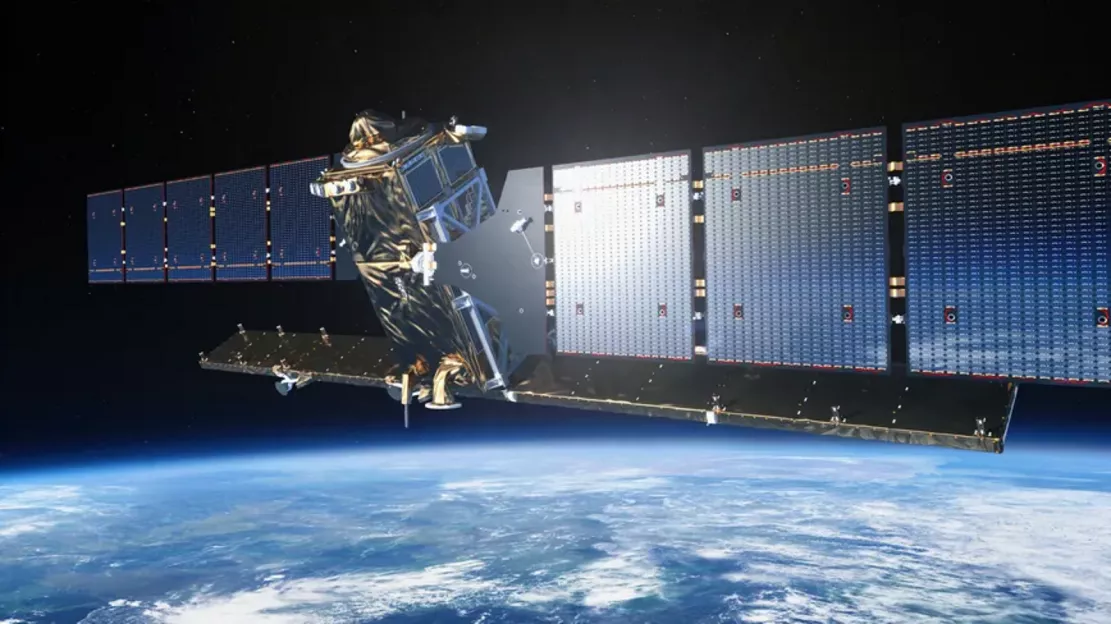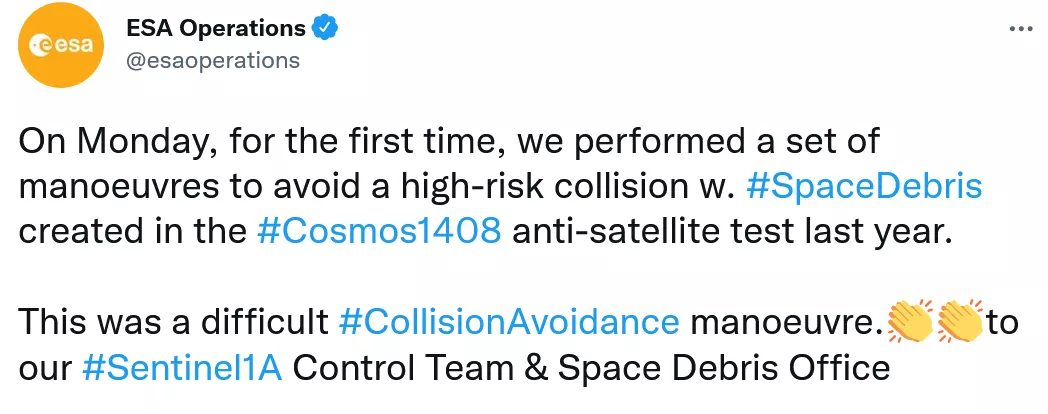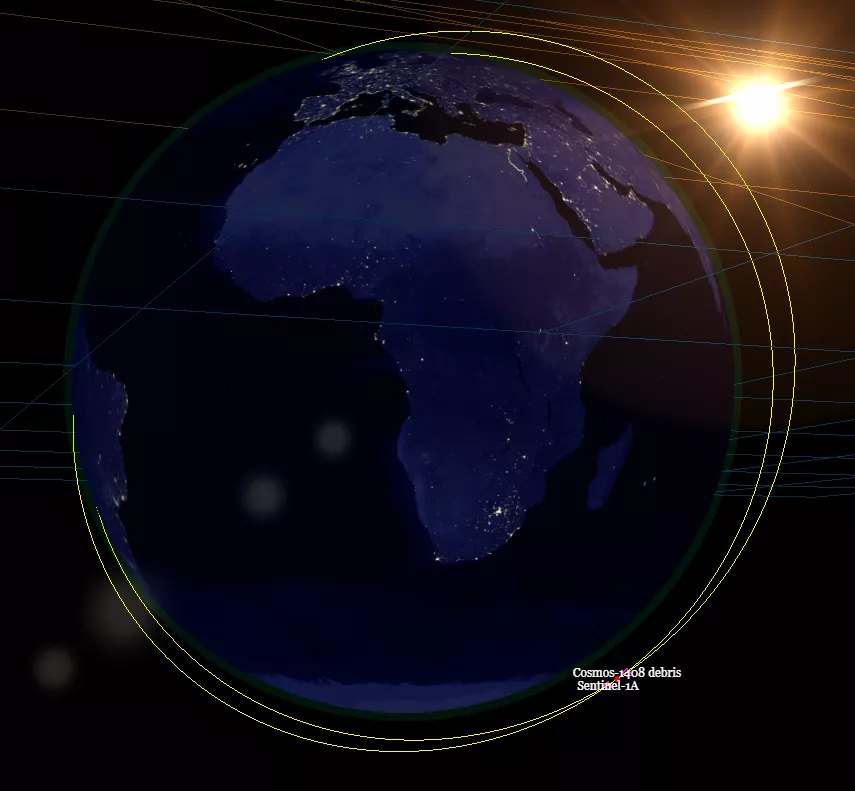An important earth observation satellite has just experienced a thrilling danger because it is avoiding space debris ESA detailed the dramatic evasion of sentry-1a satellite in a series of tweets on Wednesday local time. It also pointed out that a Russian missile test in 2021 scattered large fragments of a deactivated cosmos satellite in orbit.

On Monday local time, sentry-1a conducted a set of emergency maneuvers to avoid the high-risk collision pointed out by the ESA.
ESA operations said in a tweet: "unfortunately, collision avoidance monitoring is the routine work of the mission control center, and our team has good experience in dealing with high-risk events. However, this near frontal collision is unique; the situation is developing rapidly, it is difficult to avoid, and we have less than 24 hours of warning."


Sentry-1a is part of ESA's earth monitoring Copernicus program. The satellite is responsible for detecting and tracking oil spills, mapping sea ice, monitoring surface changes and providing data to help respond to natural disasters.
The satellite moved to avoid a fragment a few centimeters in diameter. Even the impact of a small piece of debris can damage the satellite. ESA changed the orbit of sentry-1a by 460 feet (140 meters). ESA pointed out that although the cosmos satellite operated in an orbit more than 200 kilometers below sentinel 1, the energy released during its explosion pushed its debris all the way up and intersected with their orbit. It is reported that the team has only a few hours to plan and implement these operations.
Although sentinel-1a is currently safe, ESA calls on people to pay attention to the destructive risk of deliberately creating space debris to the entire space environment.
The problem of space debris is becoming more and more serious, which poses a danger not only to satellites but also to human inhabited space stations. Obviously, the danger of the sentinel will not be the last.